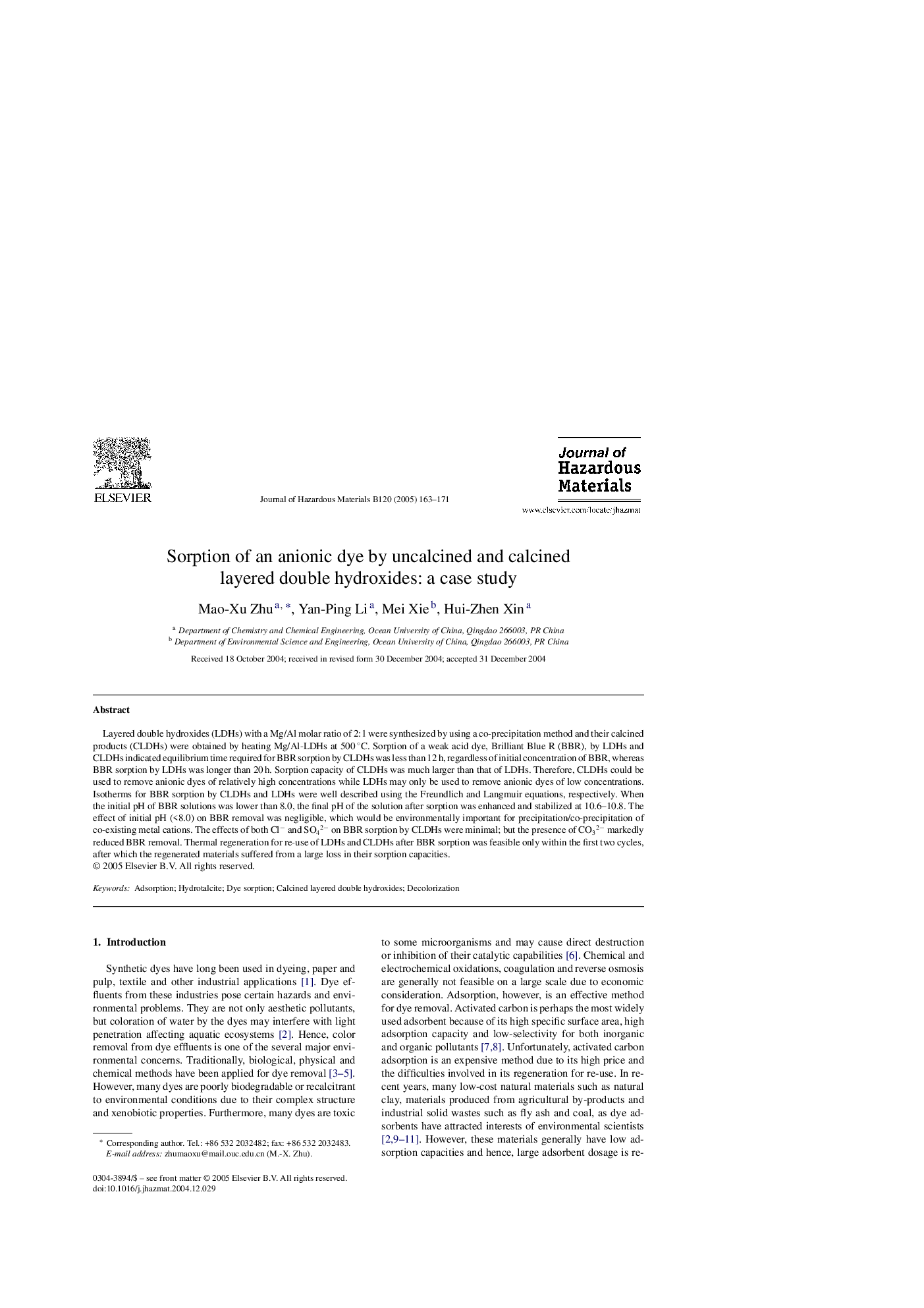| Article ID | Journal | Published Year | Pages | File Type |
|---|---|---|---|---|
| 9674315 | Journal of Hazardous Materials | 2005 | 9 Pages |
Abstract
Layered double hydroxides (LDHs) with a Mg/Al molar ratio of 2:1 were synthesized by using a co-precipitation method and their calcined products (CLDHs) were obtained by heating Mg/Al-LDHs at 500 °C. Sorption of a weak acid dye, Brilliant Blue R (BBR), by LDHs and CLDHs indicated equilibrium time required for BBR sorption by CLDHs was less than 12 h, regardless of initial concentration of BBR, whereas BBR sorption by LDHs was longer than 20 h. Sorption capacity of CLDHs was much larger than that of LDHs. Therefore, CLDHs could be used to remove anionic dyes of relatively high concentrations while LDHs may only be used to remove anionic dyes of low concentrations. Isotherms for BBR sorption by CLDHs and LDHs were well described using the Freundlich and Langmuir equations, respectively. When the initial pH of BBR solutions was lower than 8.0, the final pH of the solution after sorption was enhanced and stabilized at 10.6-10.8. The effect of initial pH (<8.0) on BBR removal was negligible, which would be environmentally important for precipitation/co-precipitation of co-existing metal cations. The effects of both Clâ and SO42â on BBR sorption by CLDHs were minimal; but the presence of CO32â markedly reduced BBR removal. Thermal regeneration for re-use of LDHs and CLDHs after BBR sorption was feasible only within the first two cycles, after which the regenerated materials suffered from a large loss in their sorption capacities.
Related Topics
Physical Sciences and Engineering
Chemical Engineering
Chemical Health and Safety
Authors
Mao-Xu Zhu, Yan-Ping Li, Mei Xie, Hui-Zhen Xin,
